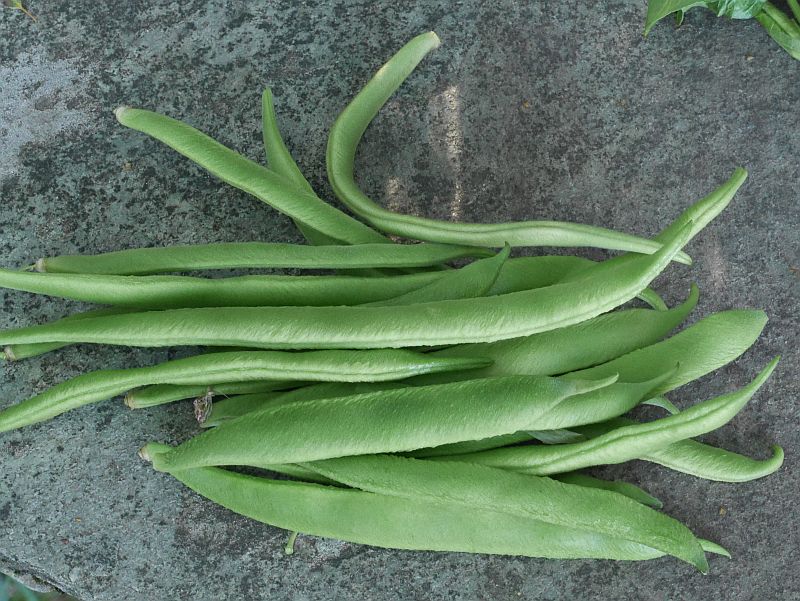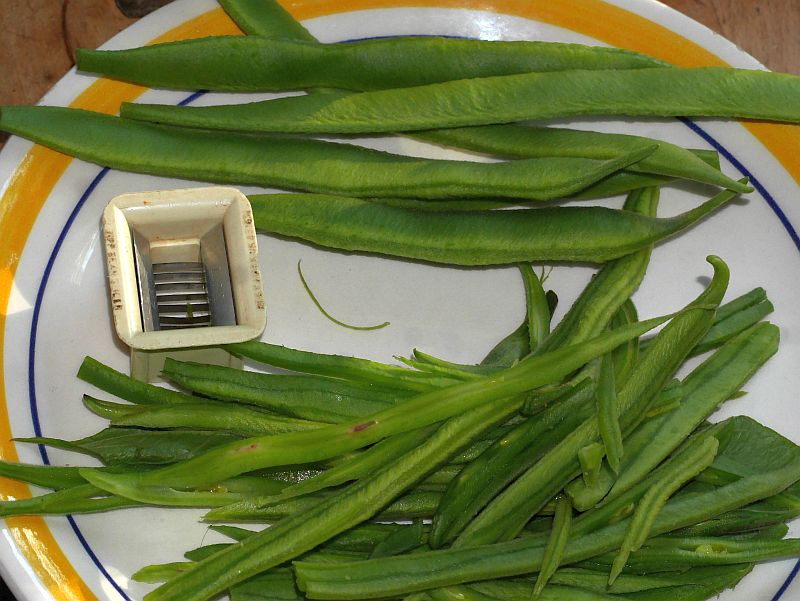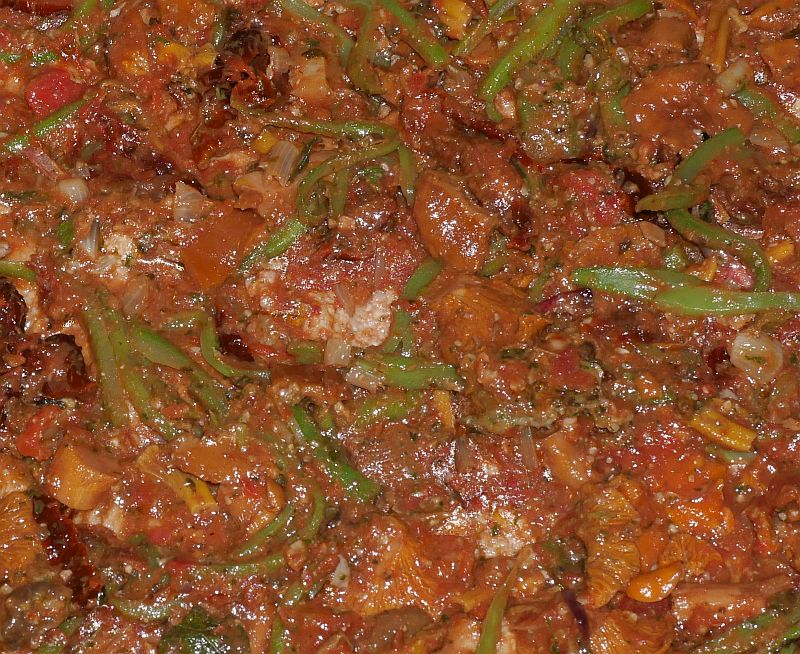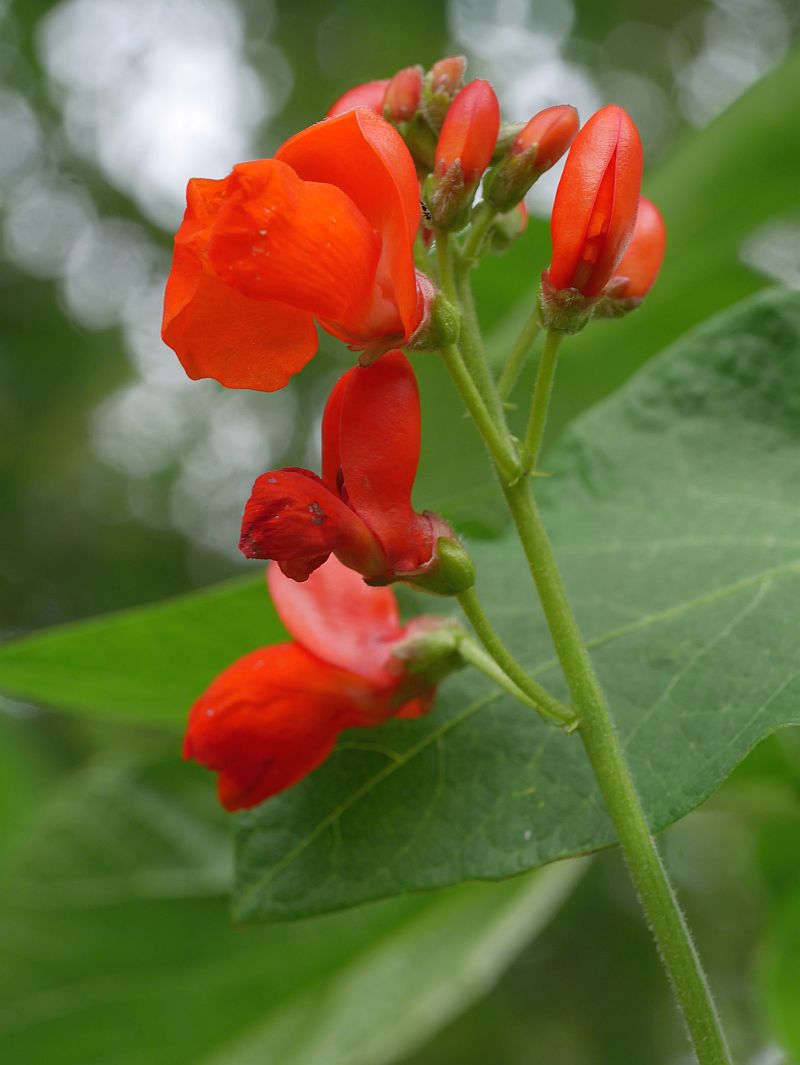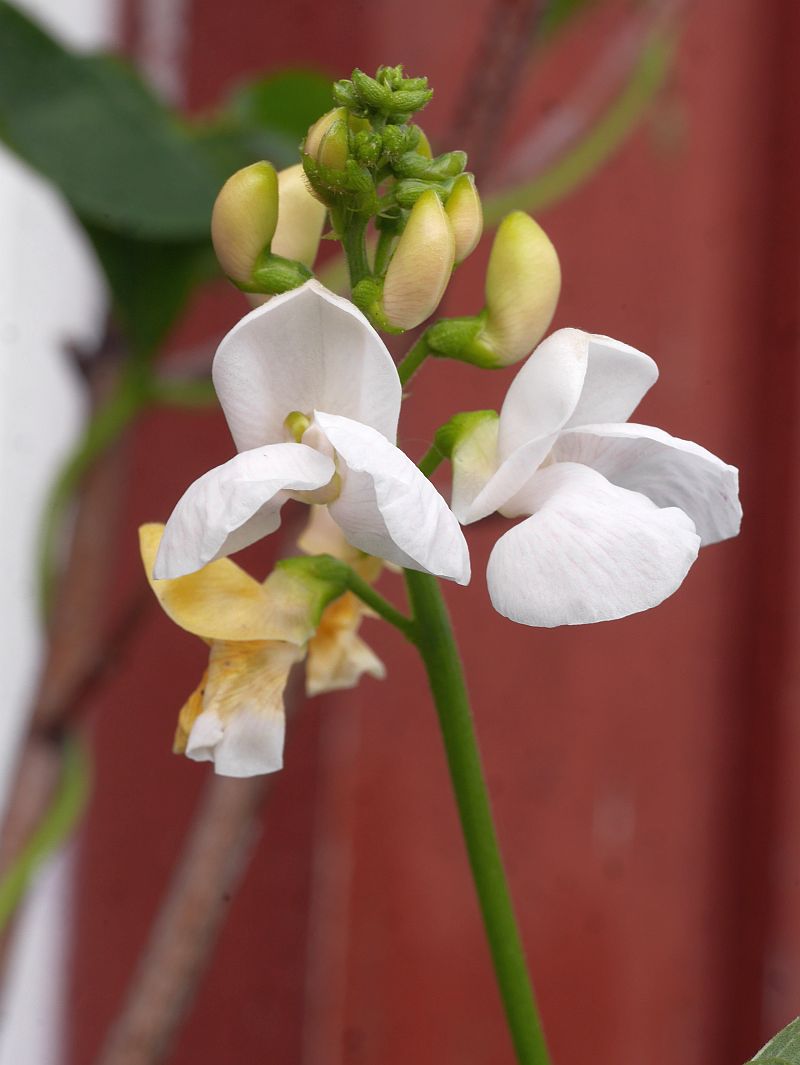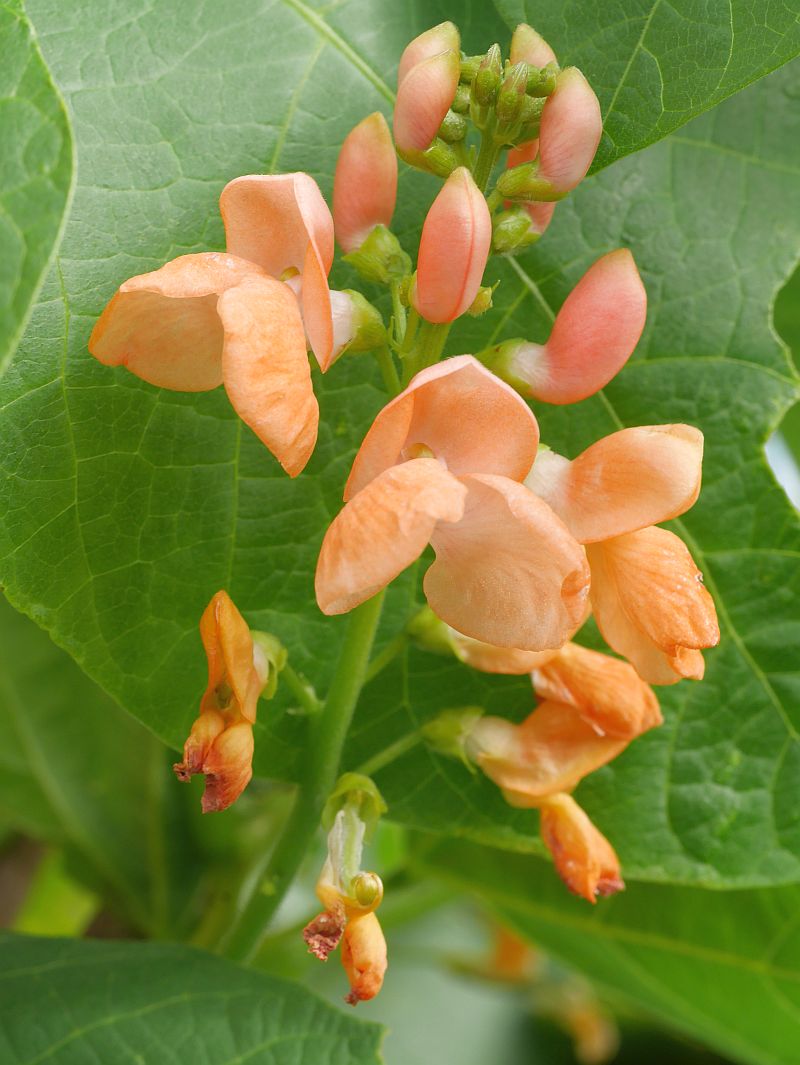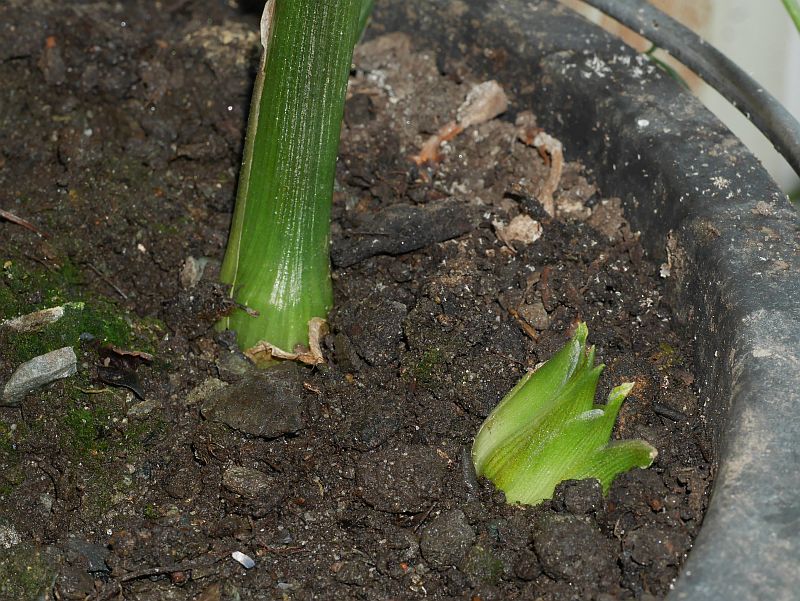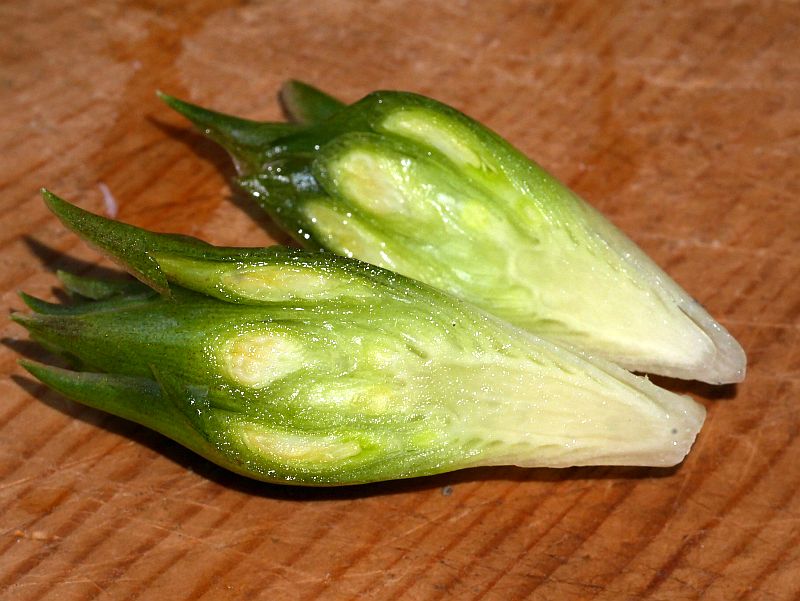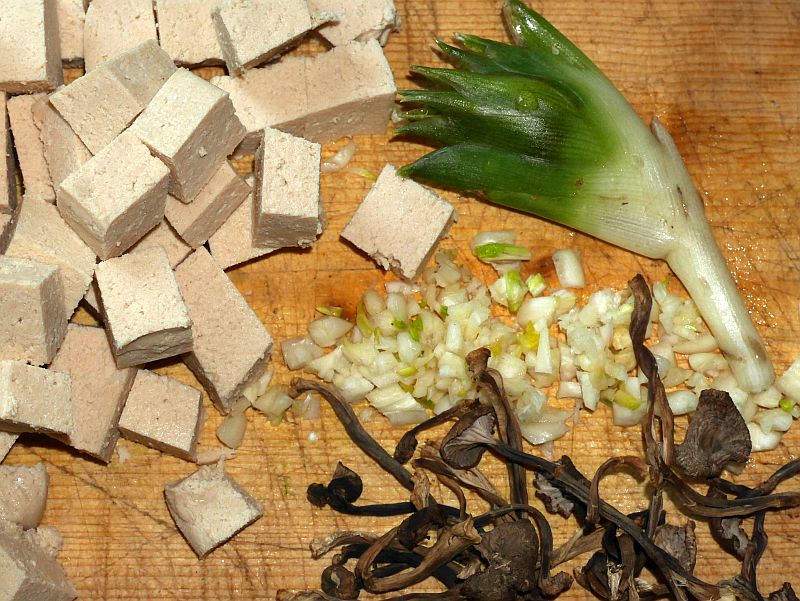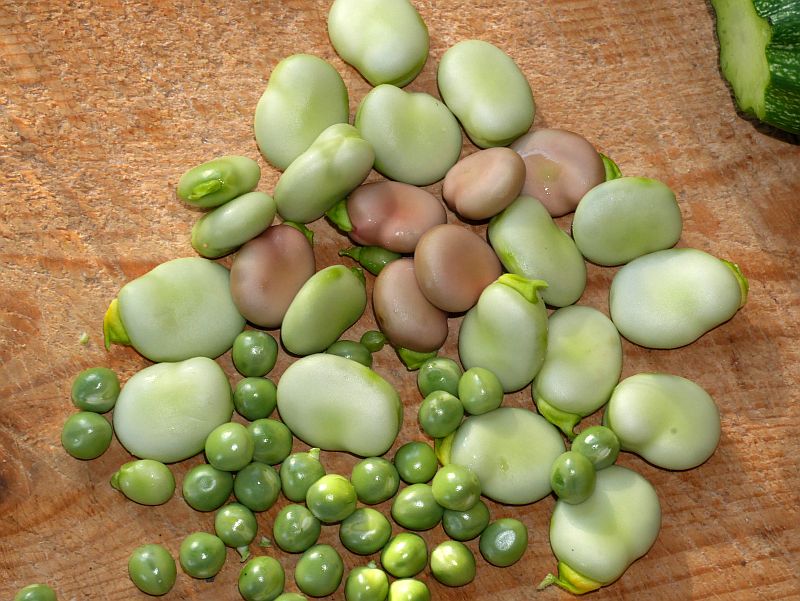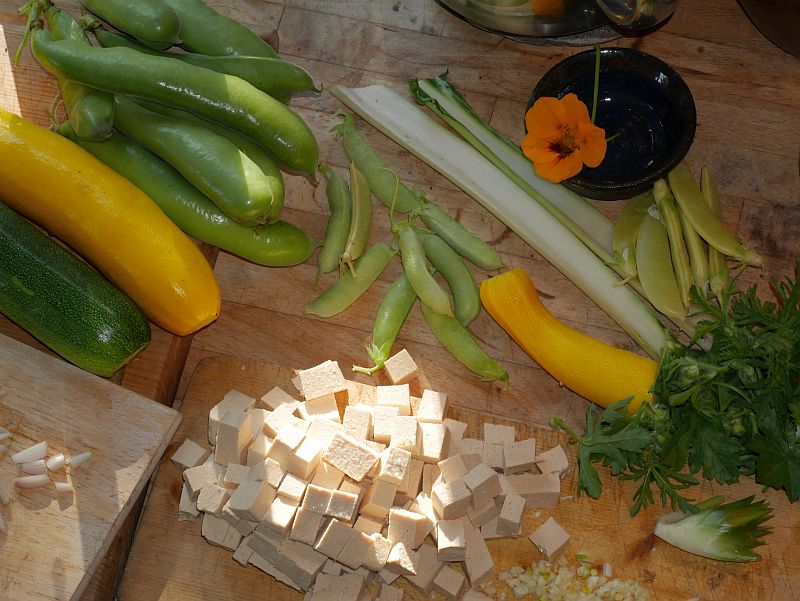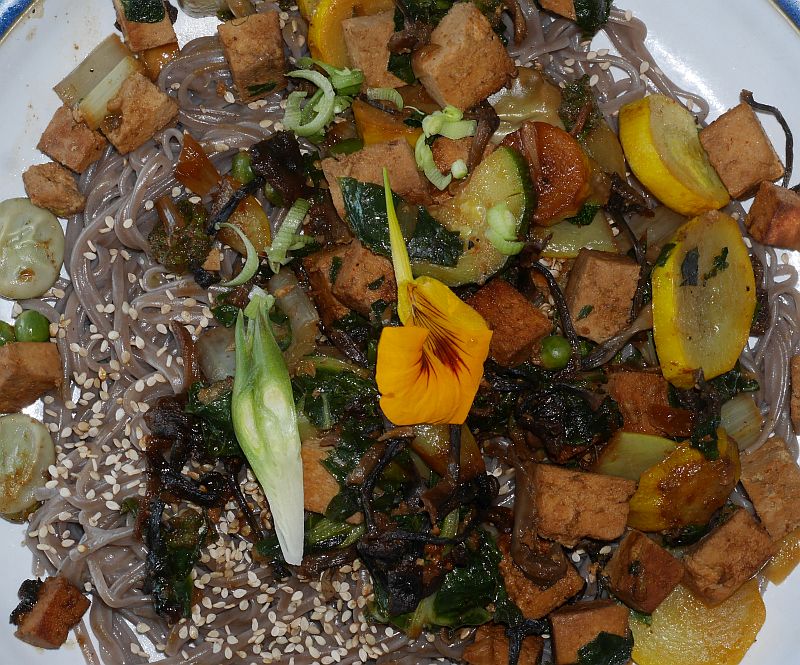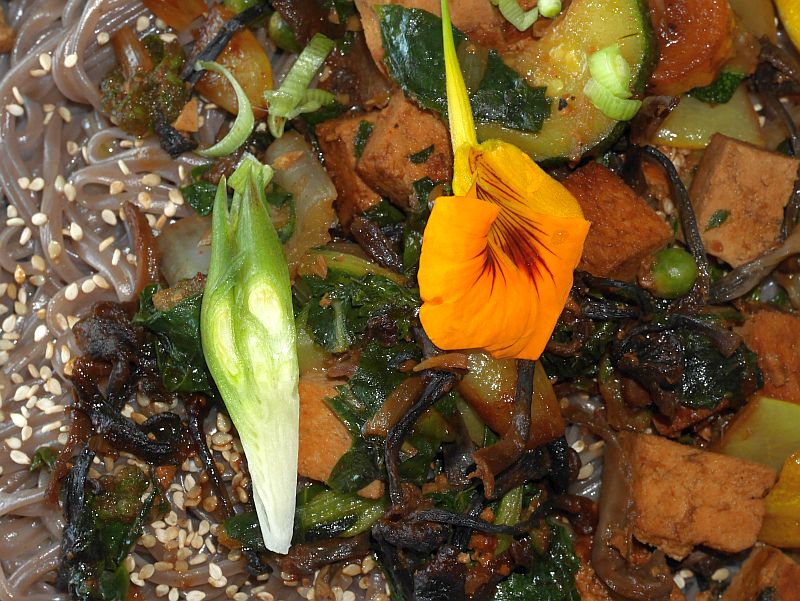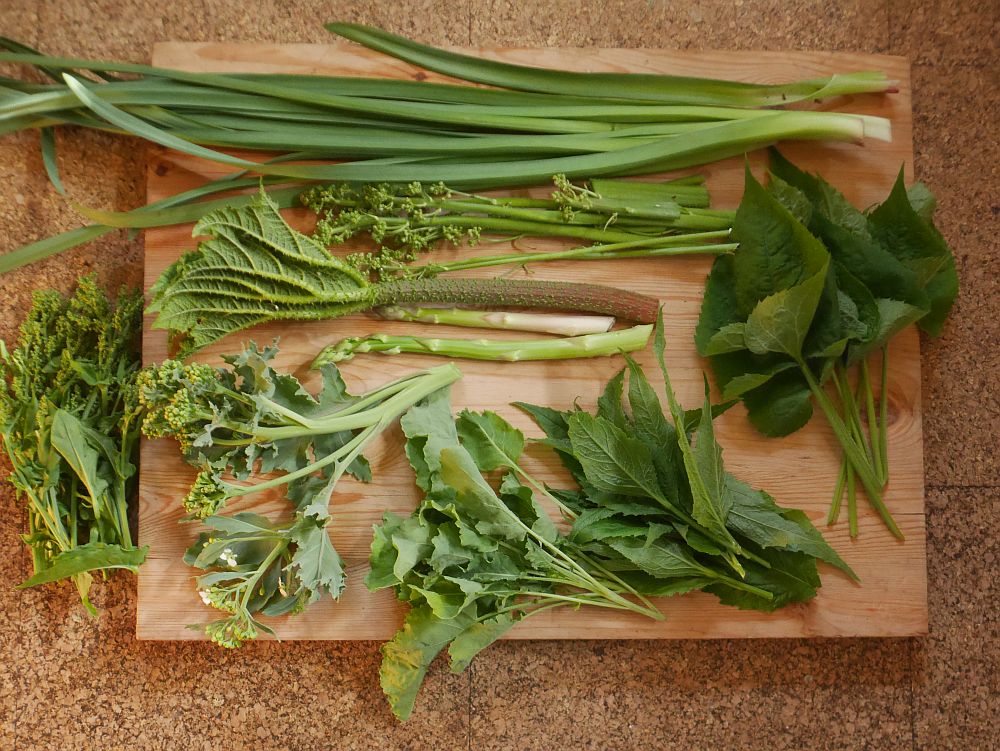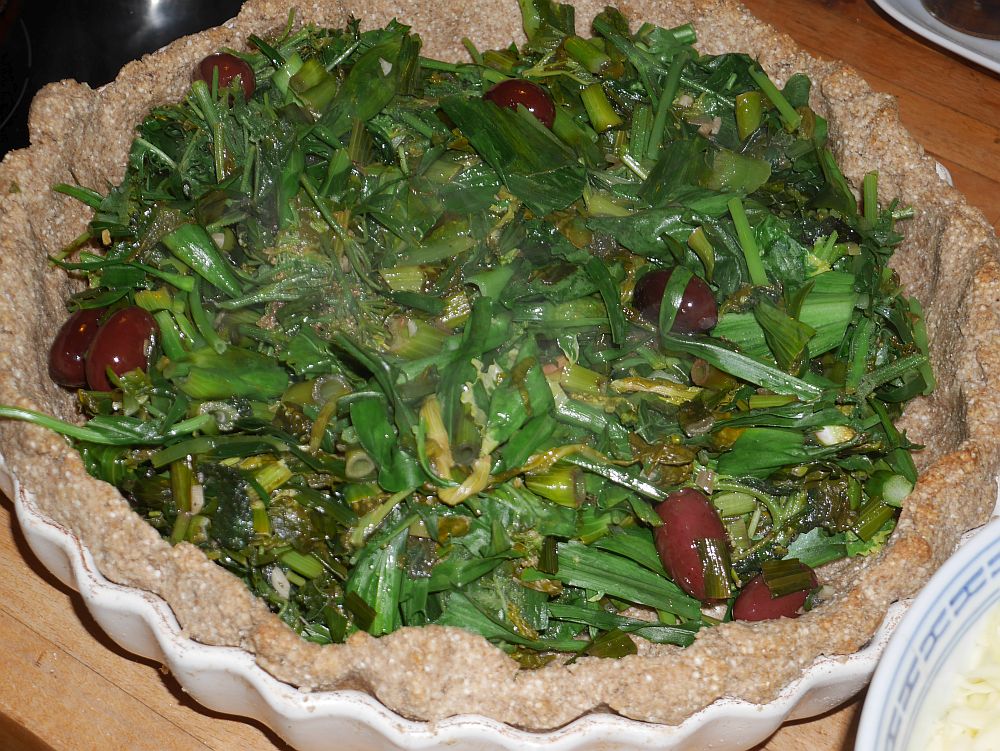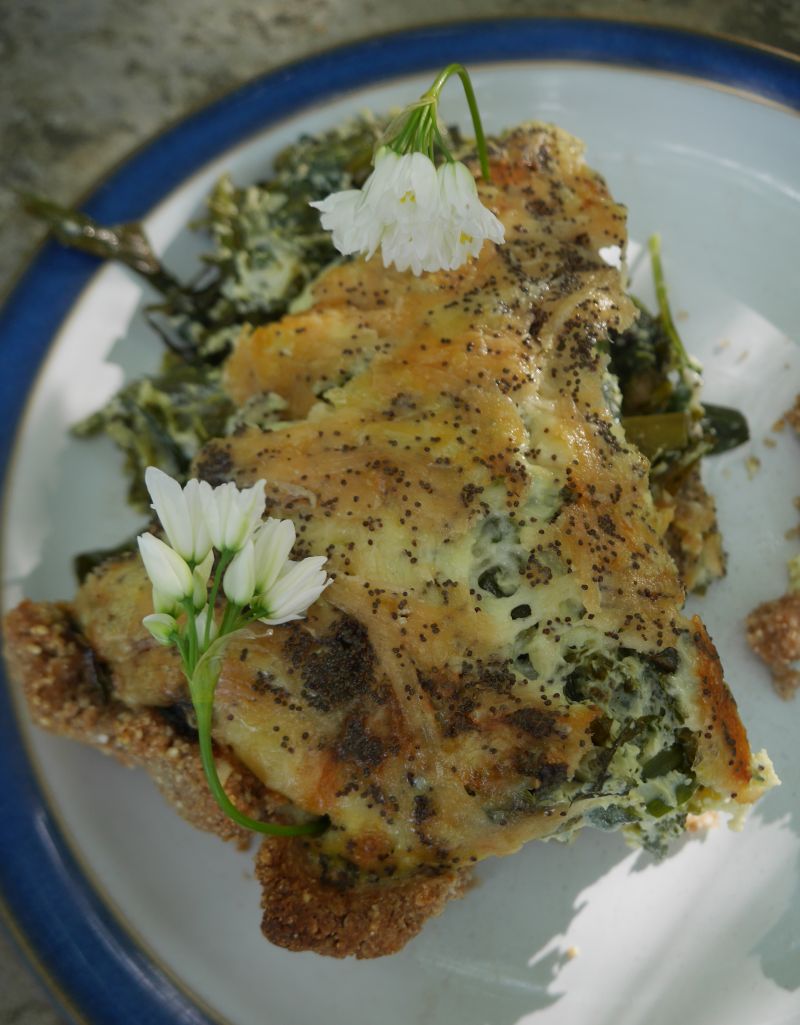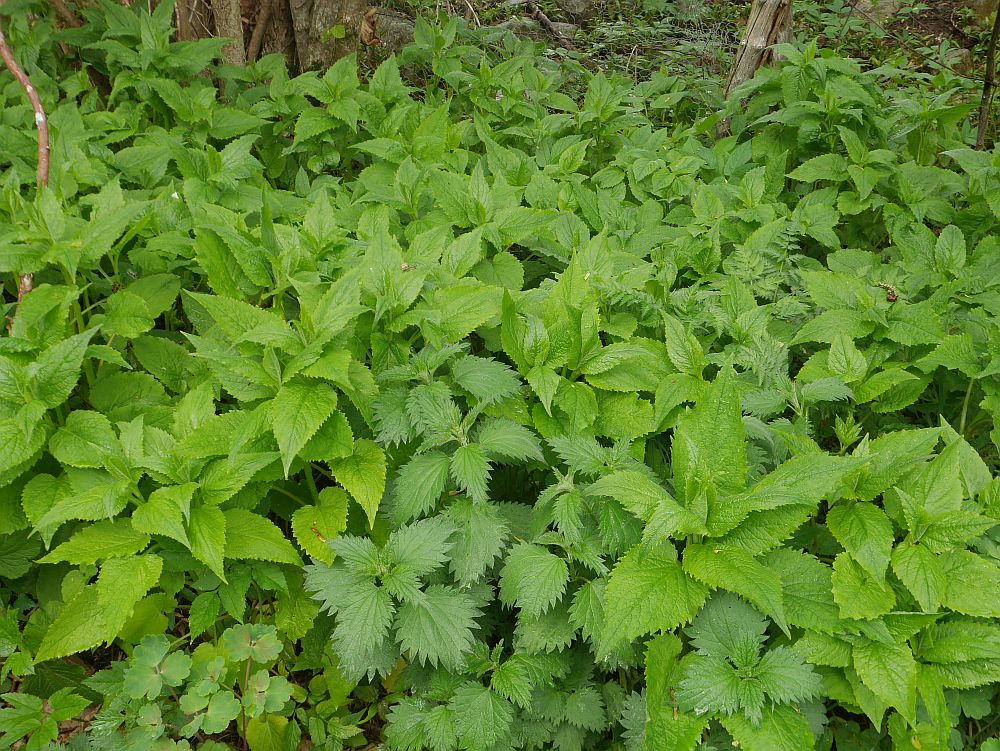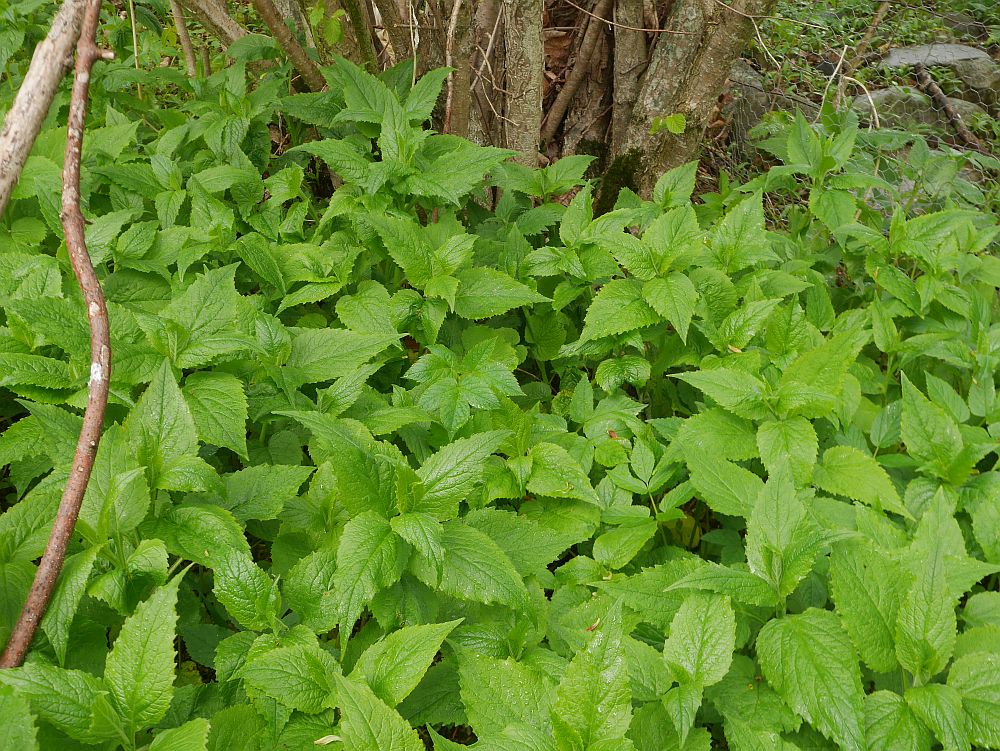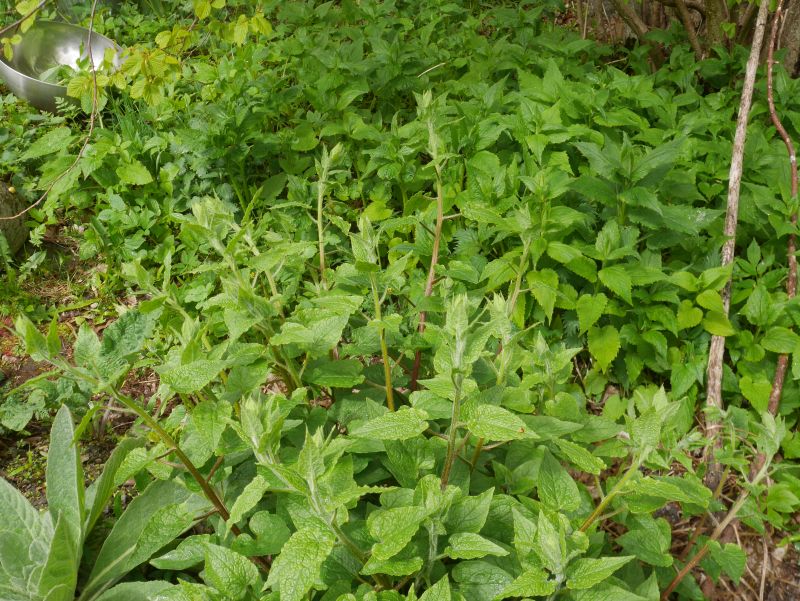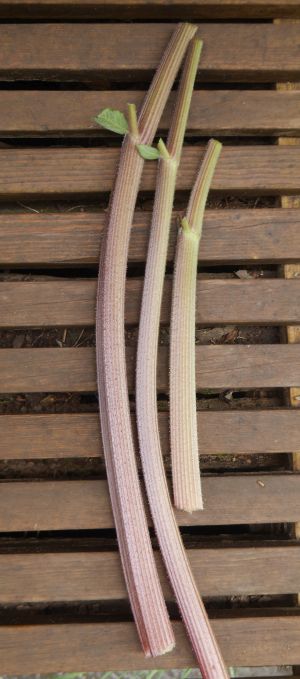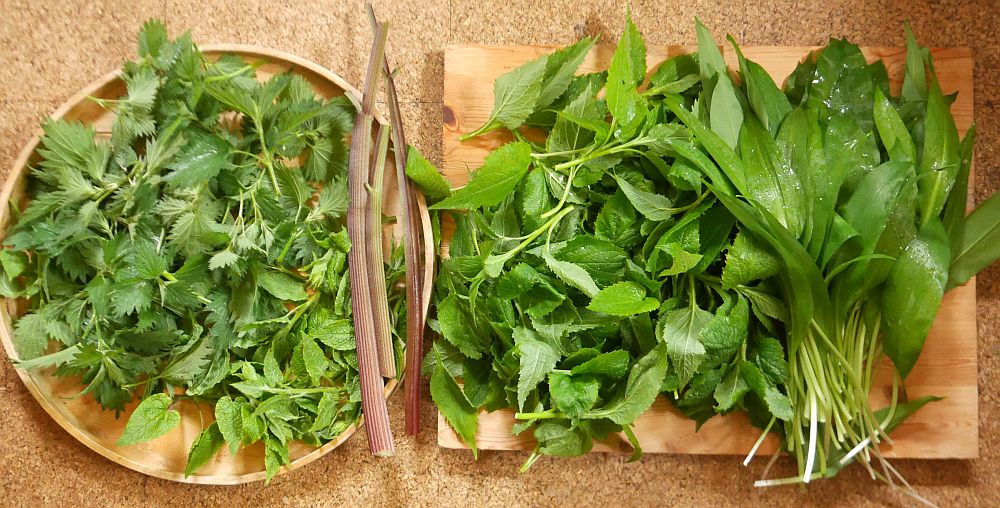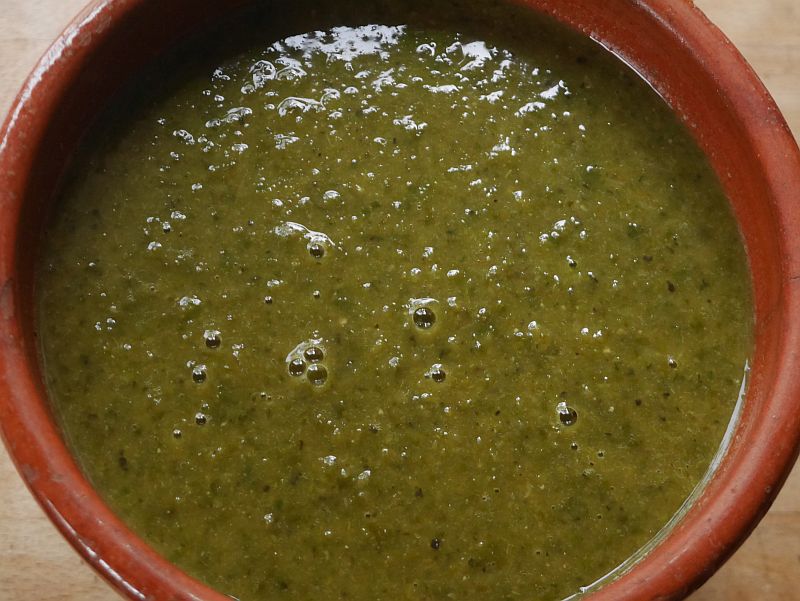As I wrote earlier, it looks like we may have a glut of runner beans (Phaseolus coccineus) this year, the first time for many years. Runner beans are borderline here and last year we only managed to get a few beans before the first frosts. This year, we could have made a first harvest a week ago, but I wanted to keep the first beans for seed for the next couple of years. Yesterday we had bread dough ready and therefore made a pizza with runner beans and a mix of fungi picked in the woods (separate post). The dough was 100% coarse whole grain rye, spelt and emmer (sourdough)! Delicious as always!
Category Archives: Food
A Taste of Myoga
After many years trying, I finally had a taste of home grown myoga or Japanese ginger (Zingiber mioga) this week!
I think it was in the garden of my friend Frank van Keirsbilck (of http://www.thevegetablegarden.be) in Belgium that I first saw this plant. I bought a plant from Edulis nursery in the UK in 2010 and planted it in my garden, hoping it would be hardy enough. It survived for 3 years, but grew weakly and emerged in the spring later and later every year, before disappearing for good. Determined to have a taste, Frank sent me a starter in 2016 and, now, 4 years on my pot grown plant kept indoors in a cold bedroom all year finally produced a flower bud, the main part eaten. We made a Japanese style soba (buckwheat pasta) dish to which the shredded myoga was added! A very pleasant mild ginger taste, making it all worthwhile. I will now move it to a larger pot.
Mallows in season #2
…and my second best mallow is the hollyhock mallow or greater musk mallow / rosekattost (Malva alcea), hardy and reliably perennial, here with perennial kale “Daubenton”, flower buds and stems of Scorzonera hispanica, Johannes’ shallot (Allium x cornutum; see https://www.edimentals.com/blog/?p=22601) and annual chopsuey greens or shungiku (Glebionis coronaria, formerly Chrysanthemum coronarium).
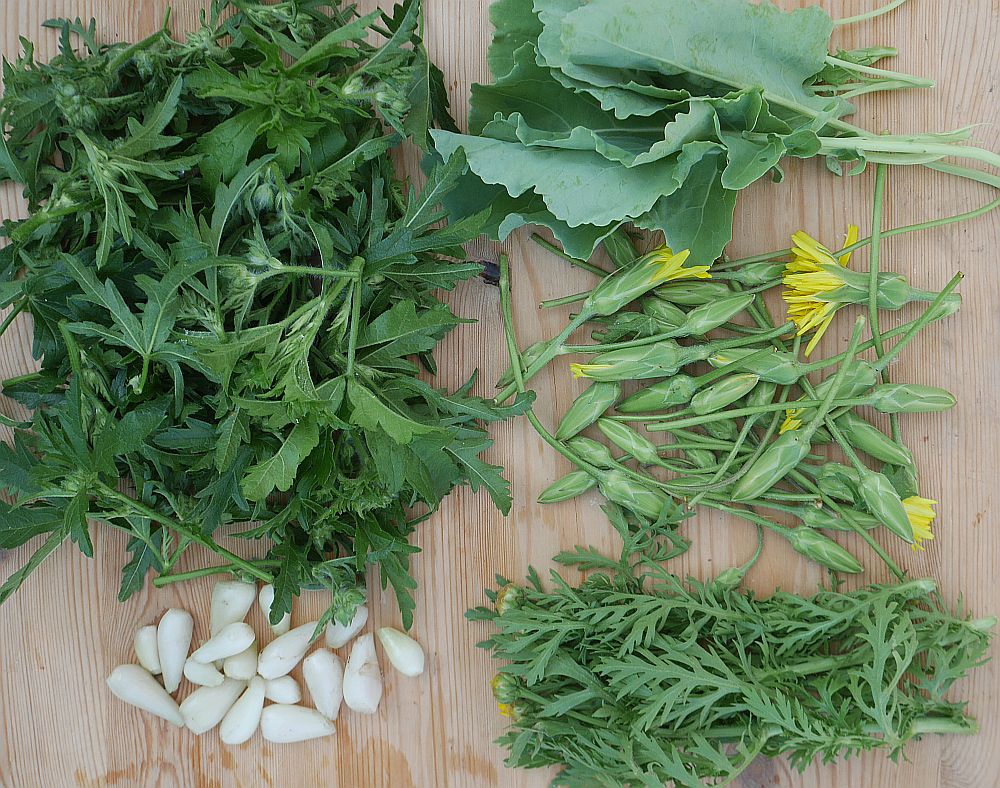
Mallows in season
Mallows (Malva spp.) are now in season for harvesting and will from now until autumn be an important source of greens and edible flowers. The best part are the flower buds with surrounding leaves. We started earlier in the week with musk mallow / moskuskattost (Malva moschata), a reliable perennial here that also self-sows in just about the right quantity. Traditionally, Malvas were often used in soups, so it was a good addition to pea soup along with
Hybrid onions (Allium senescens x)
Rumex acetosa (mixed Russian cultivars); sorrel / engsyre
Campanula trachelium tops (nettle leaved bellflower / nesleklokke)
Myrrhis odorata unripe seed pods (sweet cicely / spansk kjørvel)
Origanum vulgare (oregano / bergmynte)

Hostas, scapes and broccolis
Last night’s greens included all my 16 Hostas, Allium scorodoprasum (sand leek / bendelløk) scapes; broccolis from sea kale (strandkål), ornamental sea kale (Crambe cordifolia) and Turkish rocket (Bunias orientalis); and flower buds of two daylilies Hemerocallis lilioasphodelus and Hemerocallis dumortieri!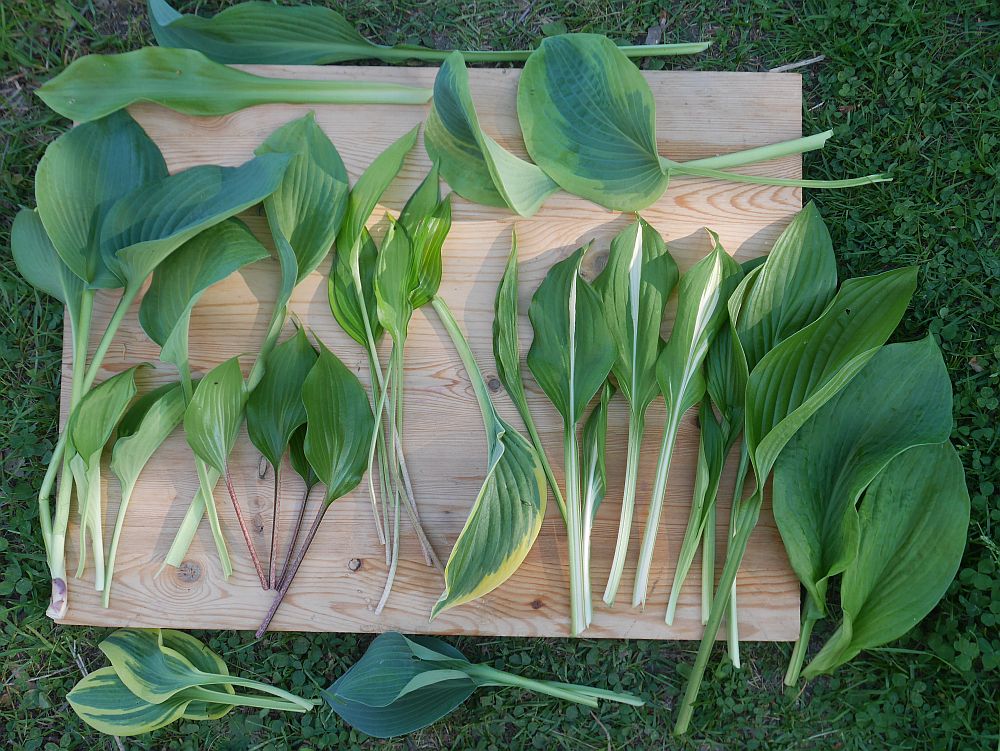

Doggy bag leaves
My daughter came over for lunch yesterday and couldn’t eat it all! Could I have a doggy bag she asked…preferably not plastic! Hosta sieboldiana “August Moon” and Ligularia fischeri leaves foraged some 5m from where we were sat did the job nicely :)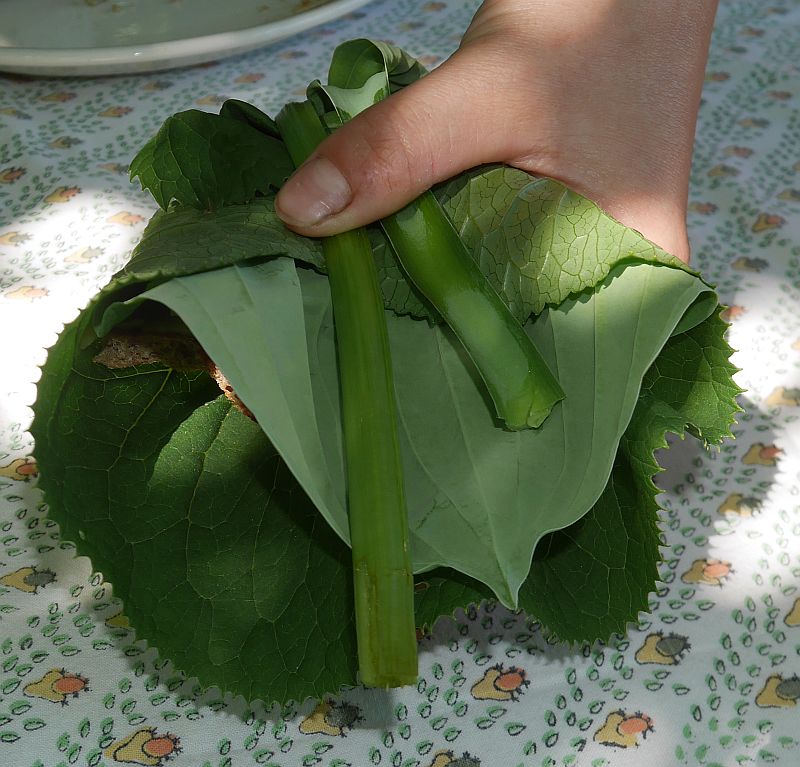

Norwegian quinoa and swamp greens medley
13th June 2020 perennial greens were stir-fried and served with quinoa and served with Allium ursinum flowers.
Allium validum (swamp or Pacific onion) with flower shoot
Saxifraga pensylvanica (swamp saxifrage)
Gunnera tinctoria
Asparagus officinalis (asparges)
Crambe maritima (sea kale / strandkål broccolis)
Perennial kale “Walsall Allotments” (flerårig kål)
Campanula latifolia (giant bellflower / storklokke)
Aster macrophyllus (big-leaf aster)
flowering shoots of various Russian Rumex acetosa cultivars (sorrel / engsyre)
The greens were stir-fried with chili and garlic and served with Norwegian organic quinoa with ramsons (ramsløk) flowers:


SO/TR Pizza
I have a feeling that no one else had this pizza last night! SO/TR? Sherpa Onion/Turkish Rocket of course, better known (to the botanist) as AW/BO or Allium wallichii/Bunias orientalis two of my June perennial vegetables, the young shoots of the onion (one of the latest Alliums to show it’s still alive in the spring) and the delicious broccolis of Turkish rocket. We turned it into pizza as we were making Danish sourdough rye bread (using the 24 hour bake at 70C method) and had made extra dough.
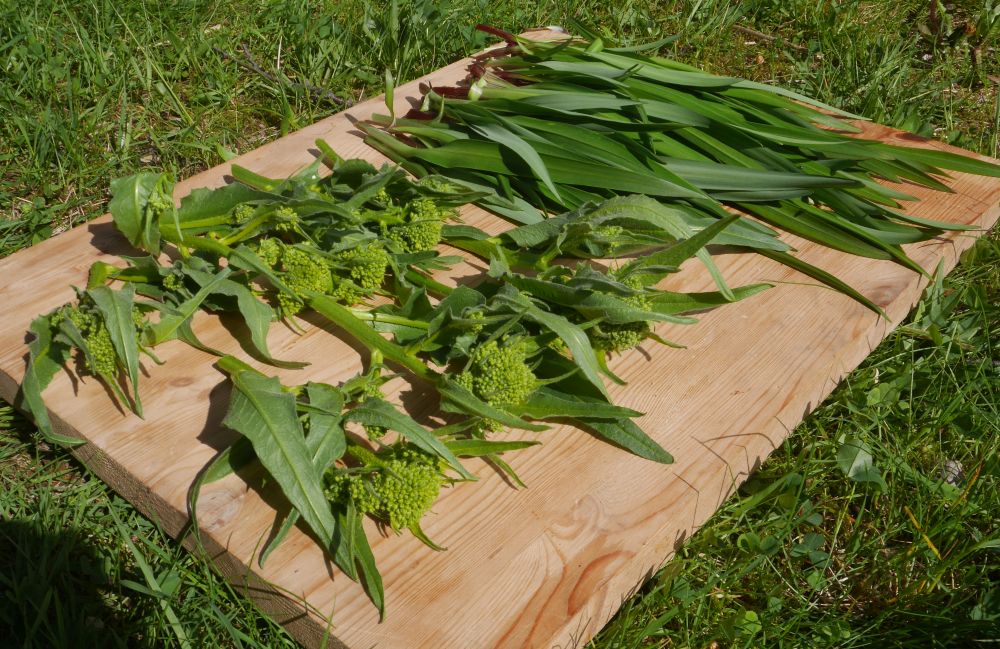
Veggie rich pie
AROUND THE WORLD IN THE EDIBLE GARDEN; Part 3 – Southern Europe and the Mediterranean countries
Inviting you to the third in a series of dinners from Malvik’s Edible Garden where we “forage” from different parts of the world!
If you’ve visited countries in south east Europe you will no doubt have eaten the delicious vegetable pies like Greek spanakopoita, Turkish börek, Italian Torta pasqualina, Bulgarian banitsa and others. Inspired by these and not wanting to make the time consuming to make filo pastry, we made a 100% wholegrain rye/barley quiche like dish with large quantities of the following perennial greens: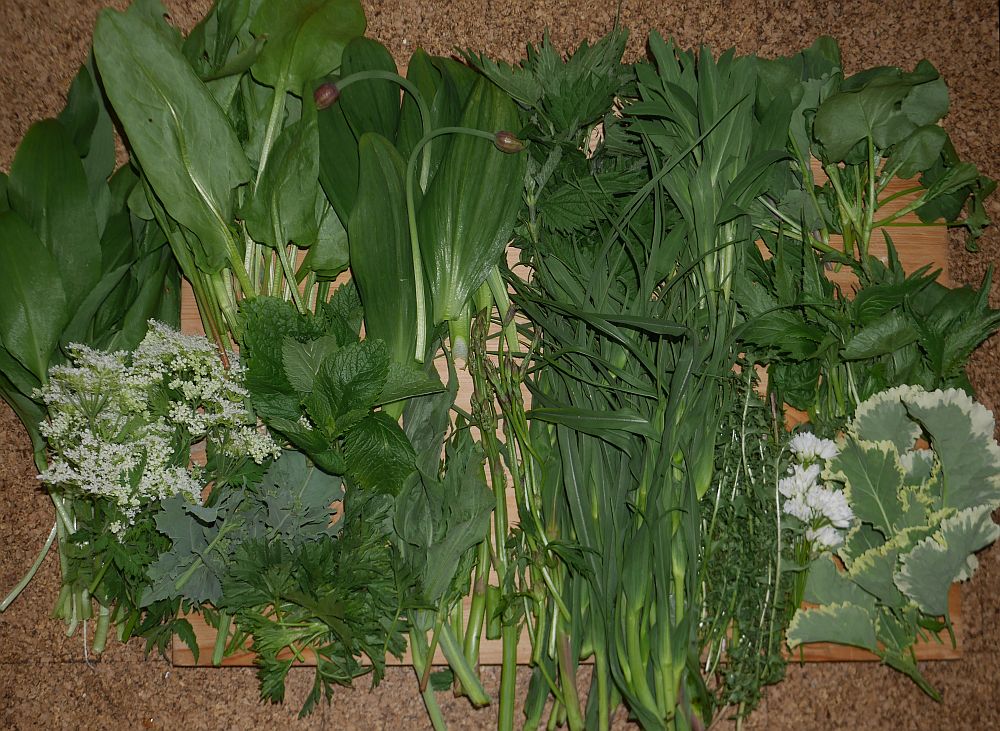
From left to right (from top left) :
Allium ursinum (ramsons; ramsløk)
Rumex patientia (patience dock; hagesyre)
Urtica dioica (stinging nettle; brennesle)
Silene vulgaris (bladder campion; engsmelle)
Rumex scutatus (Buckler-leaved sorrel; Fransksyre)
Rumex acetosa (sorrel; engsyre)
Myrrhis odorata (sweet cicely; Spansk kjørvel)
Malva alcea (hollyhock mallow; rosekattost)
Melissa officinalis (lemon balm; sitronmelisse)
Scorzonera hispanica (Scorzonera; scorsonnerot, svartrot)
Asparagus officinalis (asparagus; asparges)
Humulus lupulus (hops; humle)
Tragopogon pratensis (Jack-go-to-bed-at-noon; geitskjegg)
Taraxacum “Moss-leaved dandelion”
Campanula trachelium (nettle-leaved bellflower; nesleklokke)
Brassica oleracea “Daubenton variegated” (perennial kale; flerårige kål)
Allium zebdanense (white flowers) from Lebanon
(with garlic and chili and imported olives)
Garden wild green soup
Last night we made a green pea soup and apart from the Hablitzia (Caucasian spinach / stjernemelde), I used perennial vegetables growing in a wild part of the garden. With little or no help from me there’s a bounty of wild edibles in this area under wild hazels (Corylus avellana) and this made for a delicious pea soup with masses of greens.
Campanula latifolia is documented as used in spring soups in the 16th century in my area in Norway and Heracleum shoots are also a tradional soup ingredient, in particular Russian borsch now thought of as a beetroot soup was originally made with hogweed shoots.

